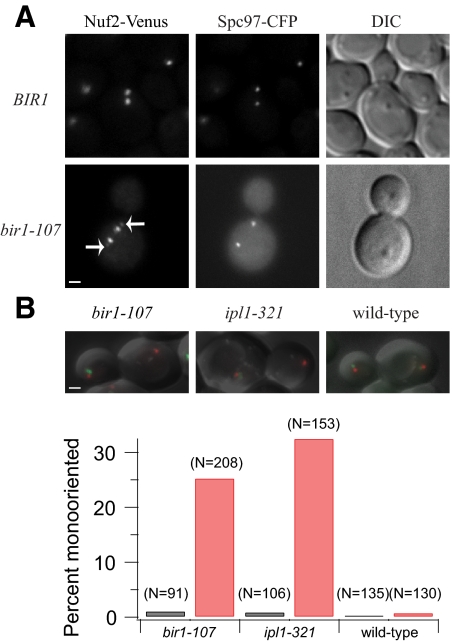Figure 2.
bir1-107 displays a biorientation defect at the restrictive temperature. (A) Wild-type kinetochores display a bilobed distribution of kinetochore fluorescence (Nuf2-Venus) between spindle pole bodies (Spc97-CFP). Asynchronous wild-type cells (BGY13-6D) were imaged live with 1 × 1 binning. PWY177-15A carrying bir1-107, Nuf2-Venus and Spc97-CFP was synchronized with α-factor and released at the restrictive temperature of 37°C. Cells were fixed with 3.7% formaldehyde and imaged with 1 × 1 binning. Arrows mark the Nuf2-Venus signal at the spindle poles corresponding to mono-oriented kinetochores. Bar, 1 μm. (B) bir1-107 (PWY262-40D), ipl1-321 (PWY286-23A) and wild-type (PWY247-30C) cells carrying a LacO array integrated on chromosome 8 and LacI-GFP were shifted to 37°C for 60 min and imaged in 10 Z-sections, spaced 0.4 μm apart, with 1 × 1 binning. Anaphase cells with one spindle pole body (marked with Spc110-mCherry) in the mother and one in the daughter were scored as bioriented if a GFP dot was visible in both mother and daughter and mono-oriented if a GFP dot was visible in only mother or daughter. Black, 22°C; Red, 37°C.

